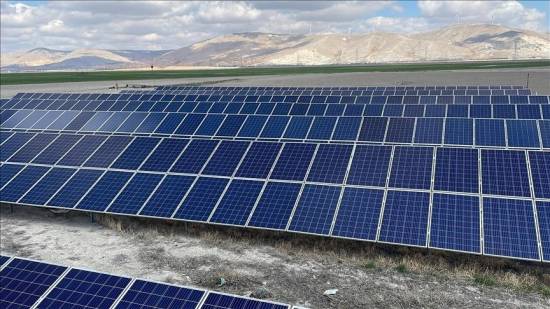Cost of low carbon energy sources to 'structurally and systematically' fall
Low carbon energy sources are much more stable and are systematically and structurally lower cost and their price trajectory will fall over time, Harry Boyd-Carpenter, managing director, Green Economy and Climate Action at the European Bank for Reconstruction and Development (EBRD), told Anadolu Agency in an interview.
"If you invest in green projects, you are investing in something that reduces energy consumption and shifts consumption away from high carbon and high volatile cost fuels to low carbon and low volatile sources. Almost all green investments fit somehow into that sort of description," Boyd-Carpenter said, noting that hydrocarbons are now very expensive and they are also fundamentally cyclical and volatile.
"Not so long ago, hydrocarbons were cheap, and they will be cheap again at some point and expensive again. It is a cycle renew," he added.
The world is currently going through an energy crisis due to skyrocketing fossil fuel prices and supply shortages which have been exacerbated by Russia's war in Ukraine.
According to International Energy Agency (IEA), renewable energy has great potential to reduce prices and dependence on fossil fuels in the short and long term.
The International Renewable Energy Agency (IRENA) calculated that the cost of electricity generation from utility-scale solar photovoltaics (PV) fell by 85% while from onshore and offshore wind, it dropped by 56% and 48% respectively between 2010 and 2020.
According to the IEA, although costs for new solar PV and wind installations have increased, reversing a decade-long cost reduction trend, natural gas, oil and coal prices have risen much faster, therefore actually further improving the competitiveness of renewable electricity.
Last year, renewable capacity additions broke a new record with 265 gigawatts (GW), a 6% increase compared to the previous year, despite the pandemic-driven supply chain challenges, construction delays and record-level commodity prices for raw materials.
The price of PV-grade polysilicon more than quadrupled, steel increased by 50%, copper rose by 70%, aluminum doubled and freight costs rose almost fivefold by March 2022.
The IEA forecasts solar and wind costs to remain higher this year and in 2023 than pre-pandemic levels, but renewable capacity additions are expected to further increase by 8% this year, reaching almost 320 GW.
"Green investments are a combination of reducing consumption or increasing efficiency and switching from high carbon and high volatility to low carbon and low volatility. These investments are economically and commercially sensible things to do," Boyd-Carpenter noted.
He explained that the financing of existing green investments is doing well, but there are always particular projects, companies and countries that are having a tough time.
"There are two sorts of points working against each other in terms of green financing. On one hand, increased cost of capital and interest rates go up. They have higher risk aversion. There is a spike in prices because of supply chain disruptions and energy price rises. All these developments are damping investment, making people cautious and slowing down investment," Boyd-Carpenter said.
He noted that on the other hand, there is a perfect alignment of decarbonization, reducing cost, diversifying energy security and reducing dependence on particular energy sources.
"All of these things are, in the long or the medium run, encouraging renewable investment," he concluded./aa


